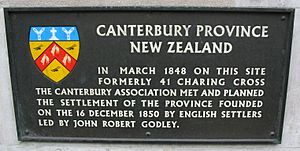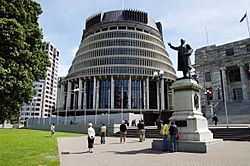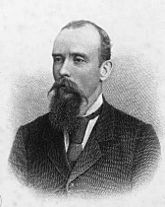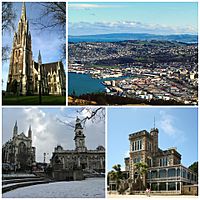European New Zealanders facts for kids
| Total population | |
|---|---|
| 2,969,391 (2013 census) 74.02% of New Zealand's population |
|
| Regions with significant populations | |
| North Island, South Island, Australia | |
| Languages | |
| English | |
| Religion | |
| Predominantly Christianity (Anglicanism · Catholicism · Presbyterianism) | |
| Related ethnic groups | |
| Anglo-Celtic Australians · British (English · Scottish · Welsh) · Irish · other European peoples |
European New Zealanders are people from New Zealand who have family roots in Europe. Most of them have ancestors from Britain and Ireland. Smaller groups come from other European countries like Croatia, Germany, Greece, Poland, France, the Netherlands, and Scandinavia. This group also includes white people whose families came from Europe indirectly, like those from America, Canada, Argentina, South Africa, and Australia. In the 2013 census, about three-quarters of New Zealand's population were of European background.
The Māori word Pākehā is often used to mean European New Zealander.
Contents
History of European Settlers

When Captain Cook arrived in 1769, he claimed New Zealand for Britain. Many Europeans came to New Zealand because British colonies were set up in Australia from 1788. Also, whaling and sealing became very popular in the Southern Ocean.
The first real settlers were missionaries and traders. They arrived in the Bay of Islands area around 1809. Some early visitors stayed and lived with Māori tribes. They were known as Pākehā Māori. Whalers and traders often married Māori women. This helped build strong trade and political links. By 1830, about 800 non-Māori people lived in New Zealand. This included about 200 runaway convicts and sailors.
By the late 1830s, many Māori, especially in the north, could read and write. They learned Māori and some English.
British Rule Begins
In 1840, British representatives signed the Treaty of Waitangi with 240 Māori chiefs. This happened because France planned a colony at Akaroa. Also, the New Zealand Company had bought land in 1839. Britain then officially claimed New Zealand in May 1840. Some people later argued that this claim went against the Māori version of the treaty. That version had promised Māori their own authority (Rangatiratanga).
By the late 1850s, the number of European and Māori people was similar. More immigrants arrived, and the European population grew naturally.
Gold Rush and Growth
After British rule was made official, many people from Britain and Ireland started moving to New Zealand. Ships like the Gananoque and the Glentanner brought immigrants. These ships usually took about 3 to 3.5 months to reach New Zealand. In the 1860s, gold was found in Otago, which started a "gold rush." By 1860, over 100,000 British and Irish settlers lived across New Zealand.
The Otago Association encouraged settlers from Scotland. This gave the Otago region a strong Scottish feel. The Canterbury Association brought settlers from the south of England. This gave Canterbury an English influence. In the 1860s, most new arrivals settled in the South Island. This was because of the gold and good land for farming. The South Island also had fewer Māori people and less fighting. The North Island became popular again after the New Zealand wars ended.
In the 1870s, a politician named Julius Vogel borrowed a lot of money from Britain. He used it to build railways, lighthouses, ports, and bridges. He also encouraged many more people to move from Britain. By 1870, the non-Māori population was over 250,000. Most settlers continued to come from Britain and Ireland for the next 150 years.
Who are European New Zealanders?
European New Zealanders are still the largest ethnic group in the country. In the 2013 census, 2,969,391 people, or 74.0% of the population, identified as European. The number of Europeans as a percentage of New Zealand's total population has slowly gone down since 1916.
In the 2006 Census, 67.6% of people identified as European. This was a drop from 80.1% in 2001. This change happened because Statistics New Zealand allowed people to say "New Zealander" as their ethnicity. They put this answer into an "Other" category. In earlier censuses, these answers were usually counted as European. Statistics New Zealand later decided to go back to counting "New Zealander" responses as part of the European group.
What is Pākehā?
The word Pākehā is often used to mean European New Zealander. No one is completely sure where the word comes from. In the 1996 census, the ethnicity question used "New Zealand European (Pākehā)". However, the word Pākehā was later removed. This was because many people did not like its use to identify ethnicity.
In 2013, a study by The University of Auckland found that the word was not seen as insulting. About 14% of people in the survey chose "Pākehā" to describe themselves. Others preferred "New Zealander," "New Zealand European," or "Kiwi."
British and Irish Roots
Many New Zealanders have British and Irish ancestors. The 2006 census showed people with British, English, Scottish, Irish, Welsh, and Celtic origins. In the past, many New Zealanders felt a strong connection to being "British." Even in the 1950s, people often called themselves British. For example, Prime Minister Keith Holyoake said that Sir Edmund Hillary's climb of Mt. Everest showed that "the British race and New Zealand" were "on top of the world."
New Zealand passports used to say "British Subject and New Zealand Citizen." This changed to "New Zealand Citizen" in 1974. Today, "European" is a common way to describe this group. But some New Zealanders still use "British" to explain their family history.
Culture and Traditions
European-New Zealand culture is a big part of the culture of New Zealand. It is mainly a Western culture. But it is also shaped by New Zealand's unique geography. The culture is also influenced by Māori and other people from Oceania. The British colonisation of New Zealand started in 1840. After that, many different groups of people from various countries moved to New Zealand.
The English were always the largest group of settlers. So, their culture had the biggest impact. This is why the English language is so common. Also, New Zealand uses common law and the Westminster system of government. Christianity (especially Anglicanism) was once the main religion. Popular sports like rugby and cricket also come from this heritage. All these things have helped shape modern New Zealand.
European settlements grew in the early 1800s. Many trading posts were set up, especially in the North Island. The experiences of European New Zealanders are often shown in New Zealand music, movies, and books. Kerikeri, founded in 1822, and Bluff, founded in 1823, are two of the oldest European settlements. The very first was the CMS mission station at Hohi, set up in December 1814.
Language in New Zealand
New Zealand English is a main type of the English language. It is spoken all over New Zealand. It is one of the country's official languages. It is the first language for most people in New Zealand.
New Zealand English started to become different from British English after English was brought to New Zealand by settlers in the 1800s. It developed as early settlers from many different parts of the British Isles mixed together. These dialects were all easy for each other to understand. Soon, a unique type of English developed. New Zealand English is different from other types of English in its vocabulary, accent, pronunciation, and grammar.
The first form of New Zealand English was spoken by the children of the settlers. These children were born in the new colony of New Zealand. This first generation created a new dialect. It became the language of the country. These children heard many different dialects from all over the British Isles. They heard a lot from Ireland and South East England. The children created the new dialect from the speech they heard. This new dialect was strong enough to influence how new settlers spoke too.
Other common European languages spoken in New Zealand, besides English, are French and German.
Music and Anthems
New Zealand has important patriotic songs:
- "God Defend New Zealand" is one of New Zealand's national anthems. Thomas Bracken, who was born in Ireland, wrote the words. The song was first sung in 1876. It became a patriotic song in New Zealand. It has the same official status as "God Save the Queen." But "God Defend New Zealand" is used more often. It became an official anthem in 1977. This happened after people asked Parliament to make it the national anthem in 1976.
- "God Save the Queen" is New Zealand's other official national anthem. It was the only national anthem until 1977. "God Save the Queen" is also the national anthem of the United Kingdom. It was adopted in 1745. Now, it is usually played only when the King or Queen, the Governor-General, or another member of the Royal Family is present. It is also played on special days like Anzac Day.
Famous Buildings

The Beehive is one of New Zealand's most famous buildings. It was designed by the Scottish architect Sir Basil Spence in 1964. The building was constructed between 1969 and 1979. Queen Elizabeth II, who is the Queen of New Zealand, unveiled a plaque there in 1977. The Prime Minister, Robert Muldoon, officially opened the building in May 1977. The government moved into the upper floors in 1979. In 2015, Heritage New Zealand said the Beehive was very important to New Zealand's history and government.
Many grand buildings in Dunedin and Christchurch were built in the late 1800s. This was after the Central Otago Gold Rush brought a lot of money. These buildings often use dark basalt stone and cream-coloured Oamaru stone. Oamaru stone is a type of limestone. Famous buildings in this style include the Dunedin Railway Station, the University of Otago Registry Building, and Christchurch Arts Centre.
Place Names from Europe

Many places in New Zealand are named after people and places in Europe. This is especially true for names from the United Kingdom, Ireland, and the Netherlands. This happened because many English, Scottish, Welsh, Irish, Dutch, and other European settlers and explorers came to New Zealand.
- New Zealand itself: In 1645, Dutch mapmakers called the land Nova Zeelandia. This was after the Dutch province of Zeeland. Later, British explorer James Cook changed the name to New Zealand.
- Auckland: Both the city and region are named after George Eden, Earl of Auckland. His title comes from a town in England.
- Canterbury: This region is named after Canterbury, England.
- Christchurch: The city's original name was "Christ Church." It was decided in 1848. Many believe it was named after Christ Church, Oxford, a college in England.
- Dunedin: This name comes from Dùn Èideann. This is the Scottish Gaelic name for Edinburgh, the capital of Scotland.
- New Plymouth: Named after Plymouth, England.
- Wellington: Both the city and region are named after Arthur Wellesley, 1st Duke of Wellington. His title comes from a town in England.
Smaller groups of settlers from other European countries also gave names to places. For example, Dannevirke and Norsewood in Hawke's Bay have Scandinavian-inspired names.
Leaders of New Zealand
All of New Zealand's forty Prime Ministers have had European ancestors. Most had Anglo-Celtic roots (English, Scottish, Northern Irish, Welsh, or Irish). However, some ancestors of three Prime Ministers were not from Britain or Ireland. David Lange had some German ancestors. Julius Vogel had some European Jewish ancestors. John Key's mother's family came from Austria.
Images for kids
See also
 In Spanish: Inmigración europea en Nueva Zelanda para niños
In Spanish: Inmigración europea en Nueva Zelanda para niños





